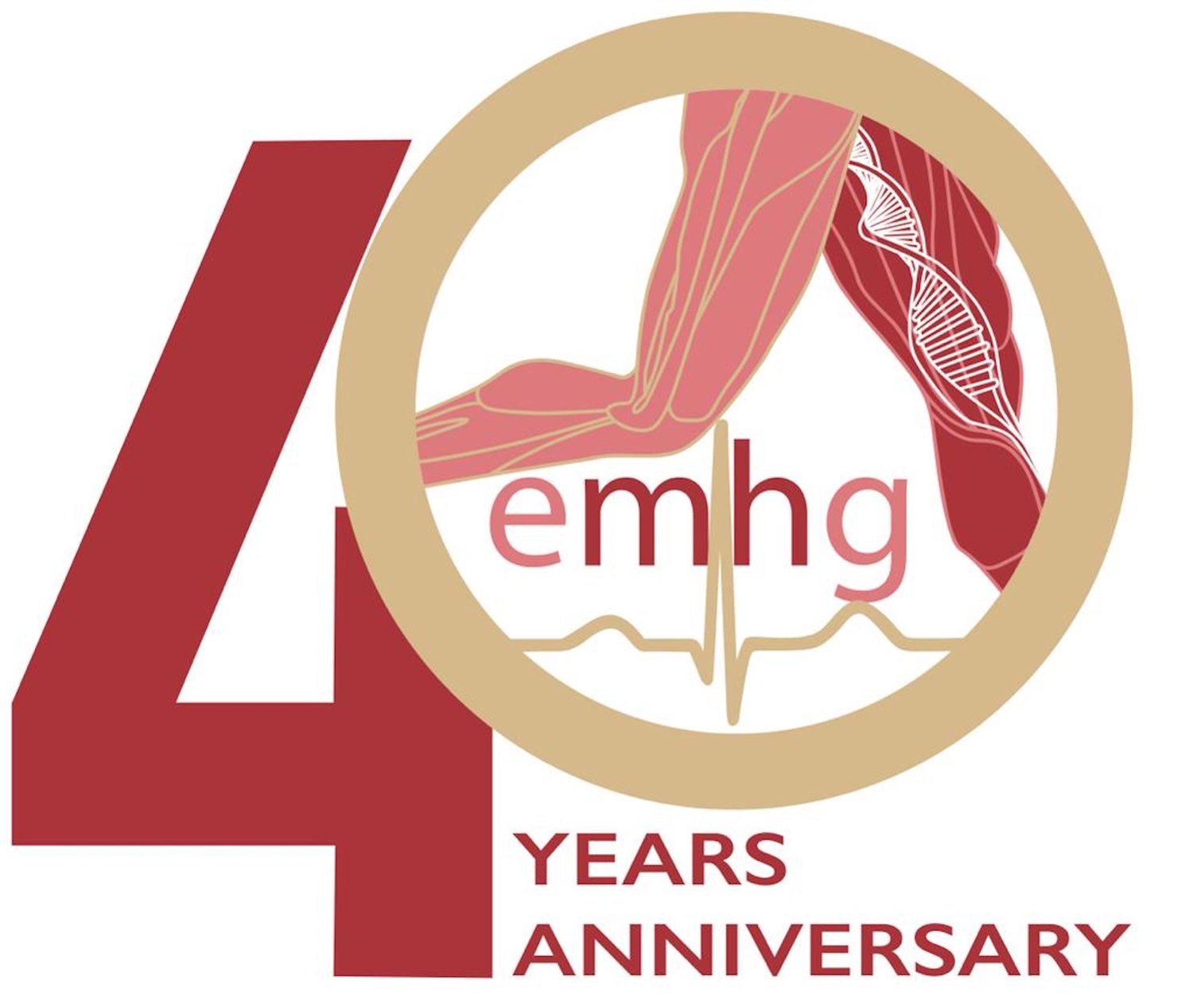Characterisation of RYR1 variants
This is an appendix to the EMHG guidelines on diagnosis of MH susceptibility
Genetic characterisation
Each variant should be fully characterised at the genetic level, including:
A full description at the DNA and protein level, considering aspects of evolutionary conservation and change in charge, polarity or structure introduced by the amino acid replacement,
Co-segregation of the variant with the disease in the family or families affected,
Assessment of the prevalence of the variant in a relevant population by means of database searches, e.g., dbSNP, 1000 Genomes, exome variant server. It is anticipated that pathogenic variants will have a minor allele frequency, MAF <1%. The estimate of MAF should be based on a sample size of > 150 subjects.
Functional characterisation
The effect of each variant on RYR1 function should be assayed by one or more of the following test systems:
Recombinant in vitro expression on a defined genetic background.
The standard system, introduced by D.H. MacLennan’s group, uses the expression of a rabbit RYR1 cDNA construct (with appropriate mutations) in HEK293 cells. Calcium release is measured fluorimetrically in response to trigger agents[1] [2] [3] [4] [5]. Although this is a non-muscle cell type, the advantage of the system is the defined cDNA and the standardised genetic background of the recipient cell line. This allows for direct comparison between mutations and eliminates the potential influence of mutations in other genes which could modify RYR1 function in cells taken from patients.
Alternatively, myotubes of the dyspedic mouse (RYR1-knock out) have been used as recipients for the expression of cDNA constructs[6]. Again, cDNA construct and genetic background are well defined and standardised. The genetic expression profile of myotubes may be closer to mature muscle. For this reason, results may not be directly comparable to the HEK system.
Assays of RYR1 function in ex vivo tissues.
Calcium measurements and ligand binding studies have been performed on tissues from MHS patients with characterised RYR1 variants:
In myotubes[7] [8], in microsomal sarcoplasmic reticulum preparations from muscle biopsies[9], and in lymphoblasts[10] [11]. Interpretation of altered RYR1 function was based on Ca2+ flux and resting [Ca2+] or ryanodine binding to sarcoplasmic reticulum RYR1 preparations. Myotubes and lymphoblasts were derived from individual patients and, therefore, the potential influence of other individual genetic factors cannot be excluded. For the sarcoplasmic reticulum preparations, muscle biopsies of several patients were pooled thus eliminating individual variation.
In order to avoid the interference of genetic factors other than RYR1, it is recommended that all assays which are based on cells taken from patients should be performed on samples from at least two independent patients with the same mutation.
Criteria for inclusion on EMHG list of diagnostic variants
Genetic and functional characterization both must be consistent with a pathological role in MH. For variants that have been functionally characterized using any of the previously described methods (section 2 above) data can be submitted directly to the EMHG through its website. Functional data acquired using novel methods will require validation through publication in a peer reviewed journal.
After the publication of these guidelines the EMHG has published a scoring matrix for classification of pathogenicity of genetic variants in malignant hyperthermia susceptibility
[1] Tong J, Oyamada H, Demaurex N, Grinstein S, McCarthy TV, MacLennan DH. Caffeine and Halothane sensitivity of intracellular Ca2+ release is altered by 15 calcium release channel (ryanodine receptor) mutations associated with malignant hyperthermia and/or central core disease. J Biol Chem 1997; 272:26332-9
[2] Lynch PJ, Tong J, Lehane M, et al. A mutation in the transmembrane/luminal domain of the ryanodine receptor is associated with abnormal calcium release channel function and severe central core disease. Proc Natl Acad Sci USA 1999;96:4164-9
[3] Tong J, McCarthy TV, MacLennan DH. Measurement of resting cytosolic Ca2+concentrations and Ca2+ store size in Hek-293 cells transfected with malignant hyperthermia or central core disease mutant Ca2+ release channels. J Biol Chem 1999;274:693-702
[4] Sambuughin N, Nelson T, Jankovic J, et al. Identification and functional characterisation of a novel ryanodine receptor mutation causing malignant hyperthermia in North American and South American families. Neuromuscul Disord 2001;11:530-7
[5] Oyamada H, Oguchi K, Saitoh N, et al. Novel mutations in C-terminal channel region of the ryanodine receptor in malignant hyperthermia. Jpn J Pharamcol 2002;88:159-66
[6] Yang T, Ta TA, Pessah IN, Allen PD. Functional defects in six ryanodine receptor isoform-1 (RyR1) mutations associated with malignant hyperthermia and their impact on skeletal excitation-contraction coupling. J Biol Chem 2003; 278: 25722–30
[7] Brinkmeier H, Kramer J, Kramer R et al. Malignant hyperthermia causing Gly2435Arg mutation of the ryanodine receptor facilitates ryanodine-induced calcium release in myotubes. Br J Anaesth 1999;83:855-61
[8] Wehner M, Rueffert H, Koenig F, Neuhaus J, Olthoff D. Increased sensitivity to 4-chloro-m-cresol and caffeine in primary myotubes from malignant hyperthermia susceptible individuals carrying the ryanodine receptor 1 Thr2206Met (C6617T) mutation. Clin Genet 2002;62:135-46
[9] Richter M, Schleithoff L, Deufel T, Lehmann-Horn F, Hermann-Frank A. Functional characterisation of distinct ryanodine receptor mutation in human malignant hyperthermia susceptible muscle. J Biol Chem 1997;272:5256-60
[10] Girard T, Urwyler A, Censier K, Mueller C, Zorzato F, Treves S. Genotype-phenotype comparison of the Swiss malignant hyperthermia population. Hum Mut: Mutation in Brief 2001:#449
[11] Tilgen N, Zorzato F, Halliger-Keller B, et al. Identification of four novel mutations in the C-terminal membrane spanning domain of the ryanodine receptor 1: association with central core disease and alteration of calcium homeostasis. Hum Mol Genet 2001;10:2879-87

